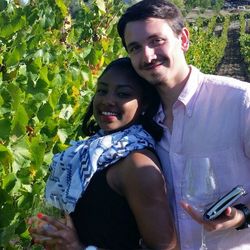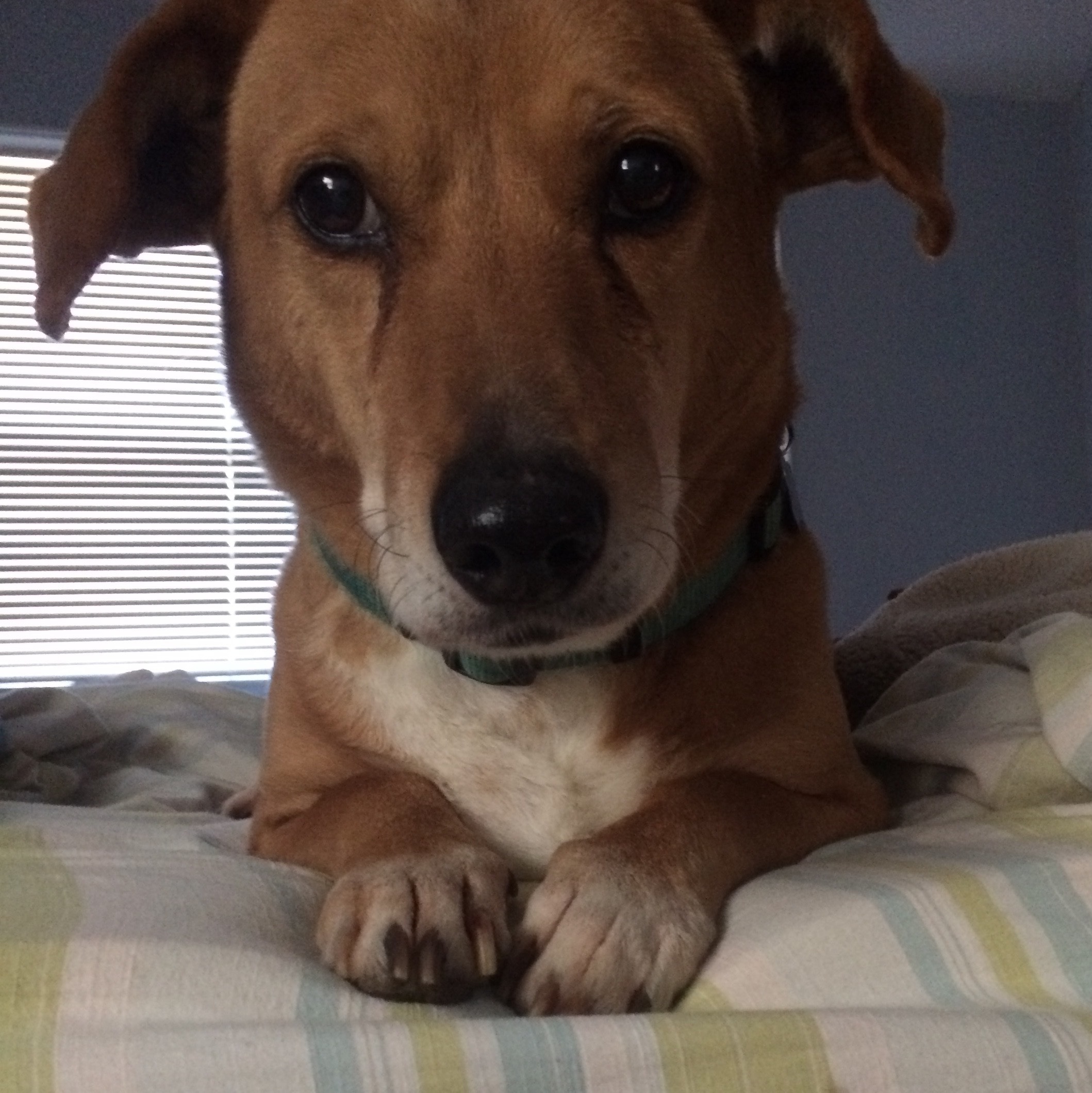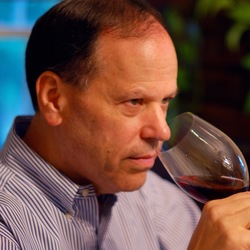The Terraces At Quarry Vineyards
The Terraces at Quarry Vineyards
Tempranillo 2015
Nose: plum & cooked berries, musky straw, black pepper hints.
Taste: dark fruit, developing to sweeter fruits and chocolate and light earth. Lingering light tannin finish. Well balanced. — 6 years ago
Château Larcis Ducasse
Saint-Émilion Red Bordeaux Blend 2003
I’m opening my last bottle of the 03 Larcis Ducasse after recently reading a couple of professional write ups about the wines fruit fading and to drink up. I did not find that to be the case w/ my last bottle. I found the wine to be around it’s peak form with another 5 years plus ahead. On the nose; menthol, eucalyptus, ripe; dark cherries, cherries, blackberries, plum, poached & candied strawberries, notes of blue fruits, black raspberries, cherry cola, touch herbaceous; sage & bay leaf, limestone & rich, moist, black, turned earth, crushed dry rocks, graphite, dry soil/clay with dry & fresh dark florals. The body is medium full. Tannins are 75-80% resolved. The length, structure, tension & balance are right where I’d expect them to be and are quite enjoyable. The palate is very similar to the nose. Menthol, eucalyptus, ripe; dark cherries, cherries, blackberries, plum, poached & candied strawberries, notes of blue fruits, black raspberries, cherry cola, touch herbaceous; sage & bay leaf, limestone & rich, moist, black, turned earth, crushed dry rocks, dry & very grippy, edgy minerals, Montecristo cigar, graphite, dry soil/clay with dry & fresh dark florals. The acidity is lovely and the long finish is well balanced with an even tug of war between fruit & earth with the dry earth dominate on the long set. Photos of; of their great southern exposed sunny hillside vineyard, the old craved stone entrance and Nicolas Thienpont & Stephane Derenoncourt. Producer notes & history...Chateau Larcis Ducasse began during the days of the ancient Romans, who valued the best hillside vineyards in the area. The early part of the modern era for Larcis Ducasse begins in 1893, when Henri Raba bought the Saint Emilion vineyard. After Henri Raba passed away in 1925, his wife and son Andre Raba continued managing Larcis Ducasse. His niece, Helene Gratiot Alphandery, inherited the property in 1941. She managed Chateau Larcis Ducasse until 1990. Then her son, Jacques-Olivier Gratiot took control of the property after she passed away and he remains in charge today. Chateau Larcis Ducasse remains the property of the Gratiot Alphandery family today. Prior to 2003, it had been years since the wines of Chateau Larcis Ducasse were prized by Bordeaux wine lovers. The wine had fallen out of favor, due to a lack of attention and effort. That changed in 2002 when they hired Saint Emilion consultants, Nicolas Thienpont and Stephane Derenoncourt to turn things around and manage the estate. One of the first improvements at the property suggested by them was to create a new drainage system. The next step was to change harvesting practices. Prior to 2002, the grapes were often picked too early and over a very short duration of 2 to 3 days. Now, the harvest takes place when the fruit is ripe and picking can take as long as 2 to 3 weeks. Starting with the 2005 vintage, all work in the vineyards moved to 100% organic farming methods. The 10.85 hectare St. Emilion vineyard of Larcis Ducasse is planted to 78% Merlot and 22% Cabernet Franc. This shows a slight change in the vineyard, as more Cabernet Franc has been added to the plantings since 2003. The vineyard is located just around the bend in the road from Chateau Pavie. In fact, their vines but up against each other. They are surrounded by more good producers. To the south, is Chateau Canon La Gaffeliere and La Gaffeliere, and as you move north, Chateau Troplong Mondot and Chateau Pavie. The terroir of Chateau Larcis Ducasse is a mixture of soils. The vines on the top of plateau and the slopes have a south facing exposure. At the higher elevations on the plateau, the terroir is limestone, clay and chalk soils. As you travel further down the slopes towards the terraces, the terroir is a blend of chalky limestone, marl, sand, silt and clay soil. At the base of the slopes, you find sand and clay soils. On average the vines are 35 years of age. While the older plantings were done at a vine density of 6,600 vines per hectare, as the vineyard continues to be slowly replanted, the vine density is increasing with each subsequent replanting. The new plantings are being done at 7,500 vines per hectare. They are also using budwood obtained through selection massale. The yields are kept low at Larcis Ducasse. In 2009, the effective yields were only 25 hectoliters per hectare.To produce the wine of Chateau Larcis Ducasse, the grapes are whole berry fermented. The fruit is transported by gravity flow into traditional, cement tanks for fermentation. Cuvaison takes between 25-28 days. There are no pump overs. Pigeages are conducted during fermentation. Malolactic fermentation takes place in barrel. The wine of Chateau Larcis Ducasse is then aged in 67% new, French oak barrels, which are mixed in size, between standard barrels and 500 liter French, oak casks. The wine is then aged for an average of 18 to 20 months in barrel before bottling. The production averages close to 4,000 cases depending on what the vintage gives. — 6 years ago

Kamen Estate Wines
Estate Grown Cabernet Sauvignon
Had at Quarry. Last bottle. Was spectacular. — 7 years ago
Tawse
Quarry Road Vineyard Chardonnay 2015
Paired so nicely with a seafood-forward meal we had at the outstanding (and simply stunning) new Grey Gardens resto in Kensington Market. This chard was ever-so-slightly effervescent which only added to its bright and fresh quality. — 7 years ago
Domaine Cornulus
Reserve Pinot Noir
Tasted 22/05/2015
Wonderful specimen - rich, thrilling, fleshy.
Composed of different selections of Pinot Noir, grown on plots in terraces over 14 ha winery has at hills of Zion.
Dark cherry red colour, crimson rim. Oily legs.
Splendid nose of chocolate, brine, squeezed strawberry, cassis, tobacco, black currant, blue fig.
Silky medium-plus palate of hackish balance. Velvety tannins. Embracing flavors of black cherry liquor, black gooseberry, strawberry jam, black currant marmalade.
Noble lingering finish...
Paired to beef tenderloin with Russian sauce. — 8 years ago
Foxes Island
Seven Terraces Pinot Noir 2014
Yum! Trying a Spring Boquet fliggt at Vino Volo at BWI — 8 years ago
Heitz Cellar
Ink Grade Vineyard Zinfandel 2014
As a pop & pour. On the nose freshly shaved wood chips, nuanced balsam fur, wafting asphalt fumes, rained-washed quarry, berry medley cake, and a pinch of menthol taking form. On the palate medium bodied, delicate mouthfeel. Ripe cherries, dried garden herbs, soaked saddle leather, chewed cigar residue. A delightful Zin with a promise of many future years of good drinking ahead of it. Right now it is enjoyable served at 55°F; should evolve nicely as the evening wears on. — 5 years ago


Château Lynch-Bages
Grand Cru Classé Pauillac Cabernet Sauvignon Blend 2000
The 2000 is delicious but, it is evolving at a glacial pace. Out of magnum.
On the nose, touch of barnyard, glycerin, ripe; blackberries, dark cherries, black raspberries, plum, strawberries & cherries. Vanilla, dry clay, limestone, river stones, just a touch of pyrazines & bandaid, dark,,turned, moist earth, dry grass and dry & fresh dark florals.
The body is full, round & sexy. Dry softened, sweet tannins. ripe; blackberries, dark cherries, black raspberries, plum, strawberries & cherries. Vanilla, dry clay, limestone, river stones, just a touch of pyrazines & bandaid, fresh tobacco leaf, saddle-wood, dry underbrush, dark, turned, moist earth, dry grass and dry & fresh dark florals. The acidity is magnificent. The structure, tension, length and balance are sensational. The finish is drop dead gorgeous. I’d still hold mine another 5 years as long as you have 3-4 bottles for more 5 year increments.
Photos of, their Estate vines, Clyde Beffa-Owner of K&L Wine Merchants, Owner of Chateau Lynch Bages - Jean-Michel Cazes, guests of the dinner and a sunset view from their Estate.
Producer notes and history...Lynch Bages takes its name from the local area where the Chateau is located in Bages. The vineyard of what was to become Lynch Bages was established and then expanded by the Dejean family who sold it in 1728 to Pierre Drouillard.
In 1749, Drouillard bequeathed the estate to his daughter Elizabeth, the wife of Thomas Lynch. This is how the estate came to belong to the Lynch family, where it remained for seventy-five years and received the name Lynch Bages. However, it was not always known under that name.
For a while the wines were sold under the name of Jurine Bages. In fact, when the estate was Classified in the 1855 Classification of the Medoc, the wines were selling under the name of Chateau Jurine Bages. That is because the property was owned at the time by a Swiss wine merchant, Sebastien Jurine.
In 1862, the property was sold to the Cayrou brothers who restored the estate’s name to Chateau Lynch family.
Around 1870, Lou Janou Cazes and his wife Angelique were living in Pauillac, close to Chateau Pichon Longueville Baron. It was here that Jean-Charles Cazes, the couple’s second son, was born in 1877.
In the 1930’s, Jean-Charles Cazes, who was already in charge of Les-Ormes-de-Pez in St. Estephe agreed to lease the vines of Lynch Bages. By that time, the Cazes family had history in Bordeaux dating back to the second half of the nineteenth century.
This agreement to take over Lynch Bages was good for both the owner and Jean Charles Cazes. Because, the vineyards had become dilapidated and were in need of expensive replanting, which was too expensive for the owner. However, for Cazes, this represented an opportunity, as he had the time, and the ability to manage Lynch Bages, but he lacked the funds to buy the vineyard.
Jean-Charles Cazes eventually purchased both properties on the eve of the Second World War. Lynch Bages and Les-Ormes-de-Pez have been run by the Cazes family ever since. In 1988, the Cazes family added to their holdings in Bordeaux when they purchased an estate in the Graves region, Chateau Villa Bel Air.
Around 1970, they increased their vineyards with the purchase of Haut-Bages Averous and Saussus. By the late 1990’s their holdings had expanded to nearly 100 hectares! Jean-Michel Cazes who had been employed as an engineer in Paris, joined the wine trade in 1973. In a short time, Jean Michel Cazes modernized everything at Lynch Bages.
He installed a new vat room, insulated the buildings, developing new technologies and equipment, built storage cellars, restored the loading areas and wine storehouses over the next fifteen years. During that time period, Jean Michel Cazes was the unofficial ambassador of not just the Left Bank, but all of Bordeaux. Jean Michel Cazes was one of the first Chateau owners to begin promoting their wine in China back in 1986.
Bages became the first wine sent into space, when a French astronaut carried a bottle of 1975 Lynch Bages with him on the joint American/French space flight!
Beginning in 1987, Jean-Michel Cazes joined the team at the insurance company AXA, who wanted to build an investment portfolio of quality vineyards in the Medoc, Pomerol, Sauternes, Portugal and Hungary.
Jean-Michel Cazes was named the director of the wine division and all the estates including of course, the neighboring, Second Growth, Chateau Pichon Baron.
June 1989 marked the inauguration of the new wine making facilities at Lynch Bages, which was on of their best vintages. 1989 also marked the debut of the Cordeillan- hotel and restaurant where Sofia and I had one of our best dinners ever. A few years after that, the Village de Bages with its shops was born.
The following year, in 1990, the estate began making white wine, Blanc de Lynch Bages. In 2001, the Cazes family company bought vineyards in the Rhone Valley in the Languedoc appellation, as well as in Australia and Portugal. They added to their holdings a few years later when they purchased a vineyard in Chateauneuf du Pape.
In 2006, Jean-Charles Cazes took over as the managing director of Chateau Lynch Bages. Jean-Michel Cazes continues to lead the wine and tourism division of the family’s activities. Due to their constant promotion in the Asian market, Chateau Lynch Bages remains one of the strongest brands in the Asian market, especially in China.
In 2017, Chateau Lynch Bages began a massive renovation and modernization, focusing on their wine making, and technical facilities. The project, headed by the noted architects Chien Chung Pei and Li Chung Pei, the sons of the famous architect that designed the glass pyramid for the Louvre in Paris as well as several other important buildings.
The project will be completed in 2019. This includes a new grape, reception center, gravity flow wine cellar and the vat rooms, which will house at least, 80 stainless steel vats in various sizes allowing for parcel by parcel vinification.
The new cellars will feature a glass roof, terraces with 360 degree views and completely modernized reception areas and offices. They are not seeing visitors until it’s completion.
In March, 2017, they purchased Chateau Haut Batailley from Françoise Des Brest Borie giving the Cazes family over 120 hectares of vines in Pauillac!
The 100 hectare vineyard of Lynch Bages is planted to 75% Cabernet Sauvignon, 17% Merlot, 6% Cabernet Franc and 2% Petit Verdot. The vineyard has a terroir of gravel, chalk and sand soils.
The vineyard can be divided into two main sections, with a large portion of the vines being planted close to the Chateau on the Bages plateau. At their peak, the vineyard reaches an elevation of 20 meters. The other section of the vineyard lies further north, with its key terroir placed on the Monferan plateau.
They also own vines in the far southwest of the appellation, next Chateau Pichon Lalande, on the St. Julien border, which can be used in the Grand Vin. The vineyard can be split into four main blocks, which can be further subdivided into 140 separate parcels.
The average age of the vines is about 30 years old. But they have old vines, some of which are close to 90 years old.
The vineyards are planted to a vine density of 9,000 vines per hectare. The average age of the vines is about 30 years old. But they have old vines, some of which are close to 90 years old.
Lynch Bages also six hectares of vine are reserved for the production of the white Bordeaux wine of Chateau Lynch Bages. Those vines are located to the west of the estate. They are planted to 53% Sauvignon Blanc, 32% Semillon and 15% Muscadelle. On average, those vines are about 20 years of age. Lynch Bages Blanc made its debut in 1990.
To produce the wine of Chateau Lynch Bages, vinification takes place 35 stainless steel vats that vary in size. Malolactic fermentation takes place in a combination of 30% French, oak barrels with the remainder taking place in tank.
The wine of Chateau Lynch Bages is aged in an average of 70% new, French oak barrels for between 12 and 15 months. Due to the appellation laws of Pauillac, the wine is sold as a generic AOC Bordeaux Blanc, because Pauillac does not allow for the plantings of white wine grapes.
For the vinification of their white, Bordeaux wine, Blanc de Lynch-Bages is vinified in a combination of 50% new, French oak barrels, 20% in one year old barrels and the remaining 30% is vinified in vats. The wine is aged on its lees for at least six months. The white wine is sold an AOC Bordeaux wine.
The annual production at Lynch Bages is close to 35,000 cases depending on the vintage.
The also make a 2nd wine, which was previously known as Chateau Chateau Haut Bages Averous. However, the estate changed its name to Echo de Lynch Bages beginning with the 2007 vintage. The estate recently added a third wine, Pauillac de Lynch-Bages.
— 6 years ago


Agharta Wines
Mountain Terraces Vineyard Cabernet Sauvignon 2011
First wine we have tried from Agharta Wines and first Cabernet from Pax. Beautiful ruby red with a dark core. Great complexity and layers on the nose, starting with an attack of fresh blueberries and opens up to a few savory and tons of floral notes. Beautiful bouquet of roses, lavendar and lilac with a smokey undertone and a touch of eucalyptus. Nose just keeps changing as it opens. Overall great mouthfeel and well rounded. Moderate tannins (5/10) that is coated in red cherries and raspberries. Moderate body and moderate plus finish. A little shorter than we would have liked but very well integrated. Overall pretty good bargin at around $30 a bottle. Drink till 2021. — 8 years ago


The Terraces at Quarry Vineyards
Rhyolite Cabernet Sauvignon 2012
Great Rutherford Cabernet. — 8 years ago
Château Fuisse
Les Brûles Pouilly-Fuissé Chardonnay 2012
1er Cru as of 2019 vintage. Would be a Monopole except half of a row was planted by another owner on what used to be a quarry at bottom of vineyard years ago when word spread that 1er Cru classification was impending.
Les Clos, also owned by Chateau Fuisse, will be the only Pouilly-Fuisse Monopole when 22 vineyards become 1er Cru as of 2019. — 5 years ago
Domaine Jean Michel Stéphan
Coteau de Bassenon Côte-Rôtie Syrah 2013
Cool label, but can you explain what the hell "sérine" is? Apparently it's some tight clustered Syrah clone that's both "highly precise" and "vulnerable to disease". Sounds risky... Especially considering this comes from the frighteningly steep terraces of Cote Rotie. Not only that, but the wines were made without new oak or sulfur. He also picks early and uses some amount of carbonic maceration. Jean Michel Stephan uses to work for Guigal, but I guess he must of learned "what not to do" instead of mimicking the style.
The intensity is beyond belief! Cote Rotie is already aromatic, but this is amplified by the carbonic quality. Further, there's a large amount of Viognier here too, which lends a bright tropical punch in the midst of classic Syrah notes (tapenade? meatiness?). There's some similarity to the Matthieu Barret Cornas I just drank, but this has far more clarity in the aromatics - a quality both important and underrated. So striking here are the aromatics, it's hard to even move on to actually tasting the wine - but once you do, it surprises again.
This wine's balance is very strange... No oak, but the high acidity is tapered by carbonic maceration. It's soft, but lean at the same time. There's a slight oily texture which might be from the Viognier, but it's counter balanced by an amazing display of fresh fruit. Raspberry, pear, black cherry, and even pineapple. From the nose to the mid palate it's an exhilarating wine., but the finish is noticeably abrupt. The tannins are tart and bitter like the skin of an under ripe plum. Aesthetically it works. From the nose all the way into the mid palate, this wine is so "over-the-top" that a sudden, unexpected bitterness comes across as a moment of clarity instead of disappointment.
I highly recommend the wine. I hope to taste other vintages and bottlings.
#syrah #naturalwine #coterotie #northernrhone #jeanmichelstephan #syrah #biodynamic #rhone #northernrhone #rhonevalley — 6 years ago
Telmo Rodríguez
Gaba do Xil Valdeorras Godello 2014
Telmo Rodriguez, Spain’s pioneer winemaker, studied viticulture & oenology at the Univ of Bordeaux & winemaker at his family winery in Rioja. Had a chance to taste '14/'15 side by side. Made from 100% Godello grown in shallow, stony granite soils on terraces facing south, west & northwest. Straw yellow with green edges and fruity floral nose with forest aromas. The palate shows white flesh fruits, light body, generous acidity in a nice mouthfeel. The finish is medium in length and pleasant. — 7 years ago
Clos Mogador
Clos Nelin Priorat White Blend 2011
We discovered discover this Garnacha Blanca blend during our May 2015 visit to Clos Mogador. Rene's son Rene had us jump in his old SUV and drove us through their steep and rocky hillside vineyards. If you've had their reds and wondered why fennel notes are there, it grows all over their property. After a tour of their vineyards we went back to their patio for a tasting...and what a view. Shown in the photos. We started the tasting with the 2010 Nelin. It was the first time we'd had it. At the time, one of the more unique whites we'd had in a long time. It was bright, fresh, subdued fruity, tangy with amazing crisp minerality. Afterwards, we went to lunch at "Amics" near by Clos Mogador. The best & most original 4 course lunches we had for seventy euros with a bottle of this wine. Great service and unparalleled accommodation. It didn't have a star but it should. The nicest couple from Brazil run it. Tonight's revisit is the 2011 and it's had a little better than 5 years in the bottle. It's definitely changed. It's, more golden now, weightier, thicker, more oily and picked up not quite a petrol quality. The fruits are; peach, apricot, pineapple, lemon & lime juice. Notes of honey, wild fragrant florals, amazing chalky minerality, perfect round acidity and a round, lush finish that we absolutely love. The blend is mostly Garnacha Blanca with some Viognier, Roussanne & Pinot Blanc. Photos of the property, views, and the father & son winemaking team of Rene & Rene Barbier. Producer history & notes...Clos Mogador produces estate bottled wines in Gratallops, Catalonia in the DOQ Priorat. Founded in 1979 by René Barbier III and his wife Isabelle Meyer. With several friends, they began replanting terraces and recuperating old ones to eventually have their first release in 1989 as Clos Mogador. This name comes from a novel written by an aunt named, Élisabeth Barbier called, “Les Gens de Mogador”, “The people of Mogador”; which chronicles the rise and fall of a family from near Avignon in France on an imaginary estate called, Mogador. Clos Mogador is 13 hectares. Six hectares are made of 80 years old Cariñena vines, two hectares of 6 years old Cabernet Sauvignon vines, three hectares of 6 years old Garnacha vines and 2 hectares of 6 year old are Syrah vines. They use mostly organic methods. It is worth knowing that at the winemaking stage, Rene Barbier uses an olive press instead of a normal wine press to extract the juice. This results in an even more intense wine from what are already highly concentrated grapes from low yields. Try the Nelin, it's simply delicious!!! Cheers. — 7 years ago
The Terraces at Quarry Vineyards
Clarksburg Chenin Blanc 2013
Consumed July 2016. I'm not normally a fan of Chenin Blanc but this was really good. Received this in one of my wine shipments. — 8 years ago
K.H. Schneider
Sobernheim Roter Tonschiefer Riesling 2014
One of the best value Rieslings at Fass Selections. So mineral. Like a rock quarry. Wonderful purity and concentration of peach/nectarine/cherry fruit on a slab of minerals. Terrific wine. Andi gets terrific mouthfeel from his dry Rieslings. Exquisite balance. — 8 years ago
The Terraces at Quarry Vineyards
Cabernet Sauvignon 2004
Great flavors. Has many years left in the bottle. Tim knows how to build a wine! — 8 years ago

















Tara Rudo
Love this. Got on sale at quarry wines. Not a real heavy cab. — 4 years ago